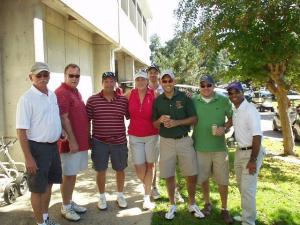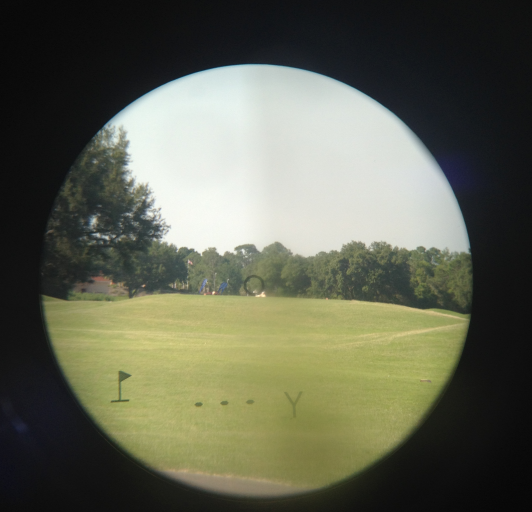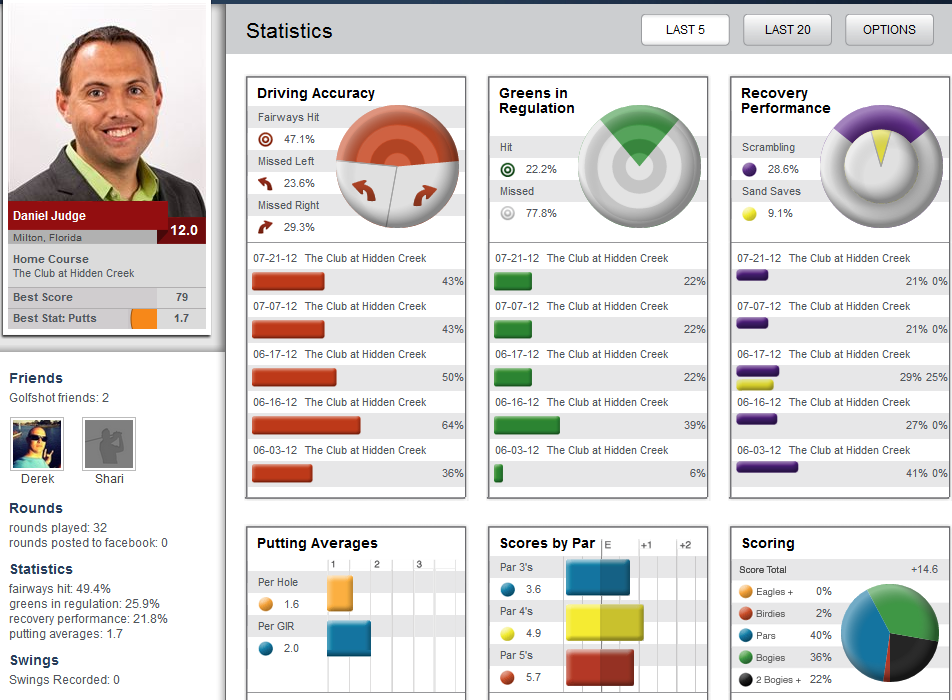 Four years ago, I gave up the game of golf. I was playing on one of the tougher courses in the area and was having a bad day. I wasn't making solid contact on any of my shots. None of my putts were going in the hole. I kept getting more and more frustrated after each swing. Golf wasn't fun anymore. After 25 years of hitting golf balls, I walked off the course on the 12th hole and put my clubs away.
Four years ago, I gave up the game of golf. I was playing on one of the tougher courses in the area and was having a bad day. I wasn't making solid contact on any of my shots. None of my putts were going in the hole. I kept getting more and more frustrated after each swing. Golf wasn't fun anymore. After 25 years of hitting golf balls, I walked off the course on the 12th hole and put my clubs away.
There were days where I thought I should go out and play, but I was still frustrated. After about 18 months, I started to get the itch. One of those mornings, I saw a book on my coworkers desk. He said the philosophy had changed the way he played the game. No longer did he through clubs on every third hole. I borrowed the book and finished it in one night. Finally I had found what I was looking for. An approach to the game that reduced frustration, provided confidence and gave me the mental game I had long been missing.
Golf is Not a Game of Perfect by Dr. Bob Rotella has raised my enjoyment in golf to a level I haven't seen since I was five years old on the golf range with my dad. There are several key concepts I took away that I still use during every round:
- Have plan before each round. This can be done at home before you leave or in the car on the way to the course. My plan includes:
- Use an appropriate club on the tee box that gives you the best look for your next shot. Don't use a driver on every hole; especially if I will put you in a worse position.
- If you are in trouble, get out of trouble. The risk of a spectacular shot through a small opening in trees is not worth the chance. Punch out and play from the fairway.
- If you are more than 210 yards from the green, lay up to 105 yards so you can use your sand wedge. This might mean hitting two sand wedges in a row. I have a better shot at saving par with two sand wedges than with a 3-wood off the fairway.
- If you are outside of 150 yards, aim for the large part of the green.
- If you are within 150 yards, aim for the flag
- Use a preshot routine that includes the following:
- Find a small target to aim at, the smaller the better. Such as: a specific point on a tree branch or a one inch patch of grass
- Stand behind the ball and create a mental picture of what you want the ball to do
- Take two practice swings
- Regardless of what happens, play the next shot as if it's a new game. The bad shot you just made is over and can't be redone.
- Regardless of the score, stay focused
 The plan from #1 above has really changed my game. I know what I'm going to do before I get to the ball. It also helps to know the distance accurately before you take your shot. I use the Bushnell Tour V2. No longer do you have to look for sprinkler heads or 150 markers to gauge distances. Instant and accurate (unlike most GPS devices).
The plan from #1 above has really changed my game. I know what I'm going to do before I get to the ball. It also helps to know the distance accurately before you take your shot. I use the Bushnell Tour V2. No longer do you have to look for sprinkler heads or 150 markers to gauge distances. Instant and accurate (unlike most GPS devices).
 In addition to the range finder, I use an app on my iPhone called Golfshot that keeps track of my score and a lot of other statistics. It's also available for Android devices. They have a nice website so you can quickly compare recent rounds to determine if your driving is getting better, how well you've been putting, and plenty of other stats.
In addition to the range finder, I use an app on my iPhone called Golfshot that keeps track of my score and a lot of other statistics. It's also available for Android devices. They have a nice website so you can quickly compare recent rounds to determine if your driving is getting better, how well you've been putting, and plenty of other stats.
Through the help of Dr. Bob and some upgraded equipment, I have been able to break 80 for the first time ever, and my confidence has never been higher. What tools do you use on the golf course to help you play better?